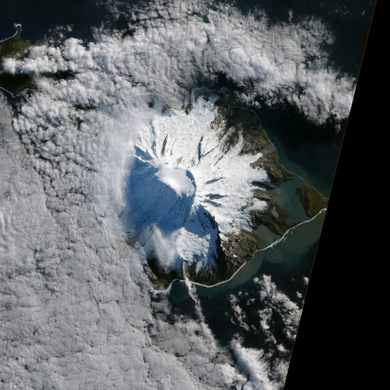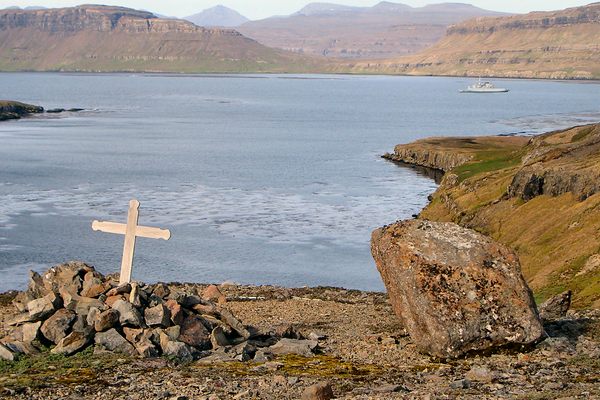Heard and McDonald Islands
Australia's only active volcanoes and highest peak are located on these remote islands thousands of miles away from the mainland.
Heard Island and the McDonald Islands encompass the most remote territory of Australia. These uninhabited, sub-Antarctic islands are located in the Southern Indian Ocean more than 2,500 miles southwest of Perth and about 2,400 miles from the nearest point on the Australian mainland, Cape Leeuwin.
The island group is also thousands of miles away from any other permanently inhabited land, with the nearest continent being Antarctica, 1,000 miles to the south. The only other “nearby” islands are the Kerguelen Islands, 280 miles northeast of Heard Island.
Heard Island makes up almost all the landmass of the territory and it’s mostly covered in glaciers. The island is dominated by the massive Maswon Peak, a 9,000-foot active volcano. Maswon is also the highest peak of Australia, surpassing the 7,300-foot Mount Kosciuszko in New South Wales, the tallest mountain on the Australian mainland.
The small McDonald Islands are 27 miles west of Heard Island and are part of a mostly submerged volcanic peak. The volcano of the McDonald Islands erupted in 1992 for the first time in the last 75,000 years and has since had other eruptions. This volcano and Mawson Peak on Heard Island are the only two active volcanoes in all of Australia.
Europeans first landed on the islands in 1855. In the following years, the territory was used as a base for seal hunting, but was abandoned in the 1880s after most of the seal population was wiped out. The United Kingdom formally claimed the islands in 1910 and they were transferred to Australia in 1947. Today, the territory is a Unesco World Heritage site and a marine nature reserve managed by the Australian Antarctic Division.
Know Before You Go
The islands can only be visited with careful planning and permission from the Australian Antarctic Division. Visits are generally only permitted for scientific purposes as part of an expedition.

















Follow us on Twitter to get the latest on the world's hidden wonders.
Like us on Facebook to get the latest on the world's hidden wonders.
Follow us on Twitter Like us on Facebook